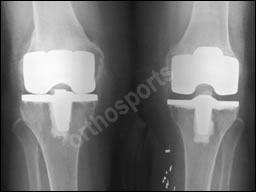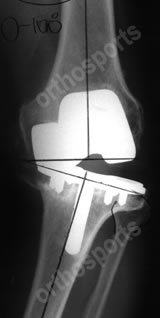Inside This section
Knee Pain After
Total Knee Replacement
Knee replacement remains one of the most successful operations ever performed. The majority of the patients find the surgery a life changing experience allowing them a new lease on life. They are to perform activities in a pain free manner which they have not done for many years.
Unfortunately not every patient is satisfied following their total knee replacement and some patients still experience pain or stiffness. Usually this is less severe than their pre-operative pain and most pain settles by 12 months without further intervention. The knee can remain swollen for this period of time. There are some conditions which may need further treatment including possible surgery but 95% of knee replacements generally work extremely well and last more than 15 years.
The most common reasons for a knee to be painful include…
Stiffness
The first 6 weeks is the critical time to regain range of motion. Occasionally a manipulation is required in the operating theatre to bend it further. It is difficult to get any further movement after 10 weeks.
Wearing out of the plastic liner (polyethylene wear)
This normally does not occur for many years and can usually be fixed by replacing the liner with a new one.
Loose components
Sometimes the components don’t attach themselves to the bone properly and need to be replaced.
Malalignment
This means that the replacement was not placed in the correct position or has shifted. This may require further surgery.
Nerve Pain
Small nerves under the skin can be irritated causing chronic pain. This is difficult to fix and often requires a pain clinic review.
Infection
This either presents with a red painful knee, a leaking wound or the knee or sudden swelling, often with the feeling of being unwell. It is important to seek urgent medical help if this occurs. If the infection is caught early enough treatment is much more successful. If the infection becomes deep then further surgery is often needed.
Soft tissue rubbing or catching on the prosthesis
This is difficult to fix but can occasionally be helped with an arthroscopy.
Unexplained Pain
This can occur and often can’t be cured.
Stress Fractures
Stree fractures can occur in the bone.
Osteolysis
Part of the bone dissolves or resorbs.
If you do have pain after a knee replacement you need a good quality x-ray. Other helpful tests include a bone scan which looks for loosening and a CRP which is a special blood test looking for infection.

Worn Liner and
Normal space between components

Ligament rupture causing malalignment and plastic wear
